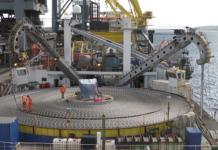 Sudlows design engineer Anthony Unsworth outlines the threat to power continuity – and how to mitigate against them.
Sudlows design engineer Anthony Unsworth outlines the threat to power continuity – and how to mitigate against them.
The demand for mission critical systems is continuously increasing. The IT equipment storing this data is extremely sensitive and will not tolerate loss of power for more than a few milliseconds. It is also at risk from power anomalies such as over-voltages, transients, sags and spikes arising from the power grid or within the facility itself. Therefore, it is vital that appropriate safeguards are put in place to ensure that a reliable power supply free from disturbance is maintained.
To achieve this, experienced engineering along with significant capital investment is required for generators, UPS systems, redundant switchgear and diverse distribution paths. Certainly the most catastrophic event in a data centre scenario would be a sustained power outage and the implementation of generators will protect against this. To maximise resilience however, various layers of protection must be applied closer to individual components of the facility which will provide protection against unplanned events upstream of the source.
Disruptions and risks
Power disruptions are caused by a host of reasons and can hit a business unexpectedly. Natural events beyond our control are often the cause with lightning strikes, earthquakes, flooding and storms all claiming responsibility for blackouts. In addition to natural disasters, humans are also responsible with construction accidents, equipment failure, sabotage and even terrorism posing a threat. Regardless of what causes a power outage, businesses must be prepared and have a power protection strategy in place should such an event occur.
The impacts of power disruption are felt by all and the longer the downtime, the more costly it is to a business. Loss in sales, decline in productivity, disgruntled customers, and claims for compensation all paint a scary picture to an institution facing disturbances to their power. Data centres storing vast amounts of sensitive information are the immediate thoughts which spring to mind but industrial plants where large machines are out of operation are equally at risk.
In addition to the obvious financial implications, people’s safety can be put at risk and fire alarms, lighting and water treatment also warrant protection. Security systems are another important consideration and CCTV, intruder alarms and access control are only as available as the power serving it.
Power anomalies
Other than a complete loss of power, there are a number of power issues that will disrupt the flow of good quality power to your mission-critical equipment and even slight sags or spikes in voltage can have significant consequences.
A common power issue is a sag which is a short term drop in voltage which starves equipment of it’s required voltage and can disrupt data by causing systems to reboot. We can often determine the effects of a sag when we see lights momentarily dim or flicker. The opposite effect is a short term over-voltage condition and is known as a spike.
An undervoltage (also known as a brownout) or an overvoltage (surge) are similar to sags and spikes but occur for extended periods. Brownouts often happen during summer months when air conditioning units are ramped up.
Harmonic distortion is the distortion of a normal power wave and is caused as a result of non-linear loads. This can cause increased heating in equipment and conductors of power systems.
As power quality can vary greatly between different providers, it is essential to invest in the necessary equipment such as power conditioners, harmonic filters and surge suppressors to remove or minimise these power anomalies. The most basic protection designed to tackle this is a surge suppressor which protects equipment from spikes and surges. Surge suppressors are inexpensive and a worthwhile investment to prevent damage to expensive electrical equipment.
The best protection is to install a centralised uninterruptible power system (UPS) complete with battery back-up capability. The UPS provides continuous power in the event of a power failure, maintaining the critical load while a signal is sent to start the generator which can then assume the load. In addition to this crucial function, the UPS conditions the power supply and provides complete protection against anomalies such as spikes and sags which can harm the sensitive data equipment.
Power protection strategies
A power protection strategy and a risk analysis is essential and should be included in your disaster recovery plan to ensure that the threats to your facility are mitigated. Try to understand what impact power disruptions would have on your business and identify the potential single points of failure in the infrastructure of your data centre. Audits and assessments of existing facilities are invaluable to highlight vulnerable areas followed by a comprehensive design to increase resilience.
Sizing the critical power system is also important and equipment must be rated in accordance with the anticipated load. Consideration must also be given to future expansion and spare capacity should be factored into the design for the addition of modular parallel UPS units, cooling systems and additional switchgear to facilitate the increased load.
Fault tolerance can also be improved by building redundancy into the power system by means of N+1 or 2N UPS units. This way, if a single piece of equipment fails or needs to be isolated for maintenance, the remaining units can still support the connected load. The scale of redundancy will be determined by weighing the capital costs against the impact level should an event occur. N+1 redundancy is a viable choice for those seeking to achieve scalability whilst keeping costs down.
Data Centres are dynamic environments and assessing the critical power system is crucial if you want to maintain your level of protection. Unfortunately, this is where many businesses fall victim to decreased resilience and downtime. Current protection must be reviewed following any expansion or changes to the data centre architecture to ensure that it is still fit for purpose.
Smooth operations are also aided by good processes and complete updated documentation. Staff should be suitably trained to identify potential problems and understand what steps to take in the event of an emergency. Lastly, regular maintenance is crucial to ensure that a data centre is functioning correctly. As well as individual testing and commissioning, integrated system testing (IST) should be undertaken to make sure that all the facility components work together correctly.
Our increased dependence on electricity and networks has led to a dramatic increase in the mission-critical operations managed in our data centres. A good power protection strategy is important to understand the threats to your business operations and ultimately a properly designed power protection system is vital to safeguard them.
Click here to see if you qualify for a free subscription to the print magazine, or to renew.
Follow us @mcriticalpower. For regular updates, sign up for the free newsletter.



